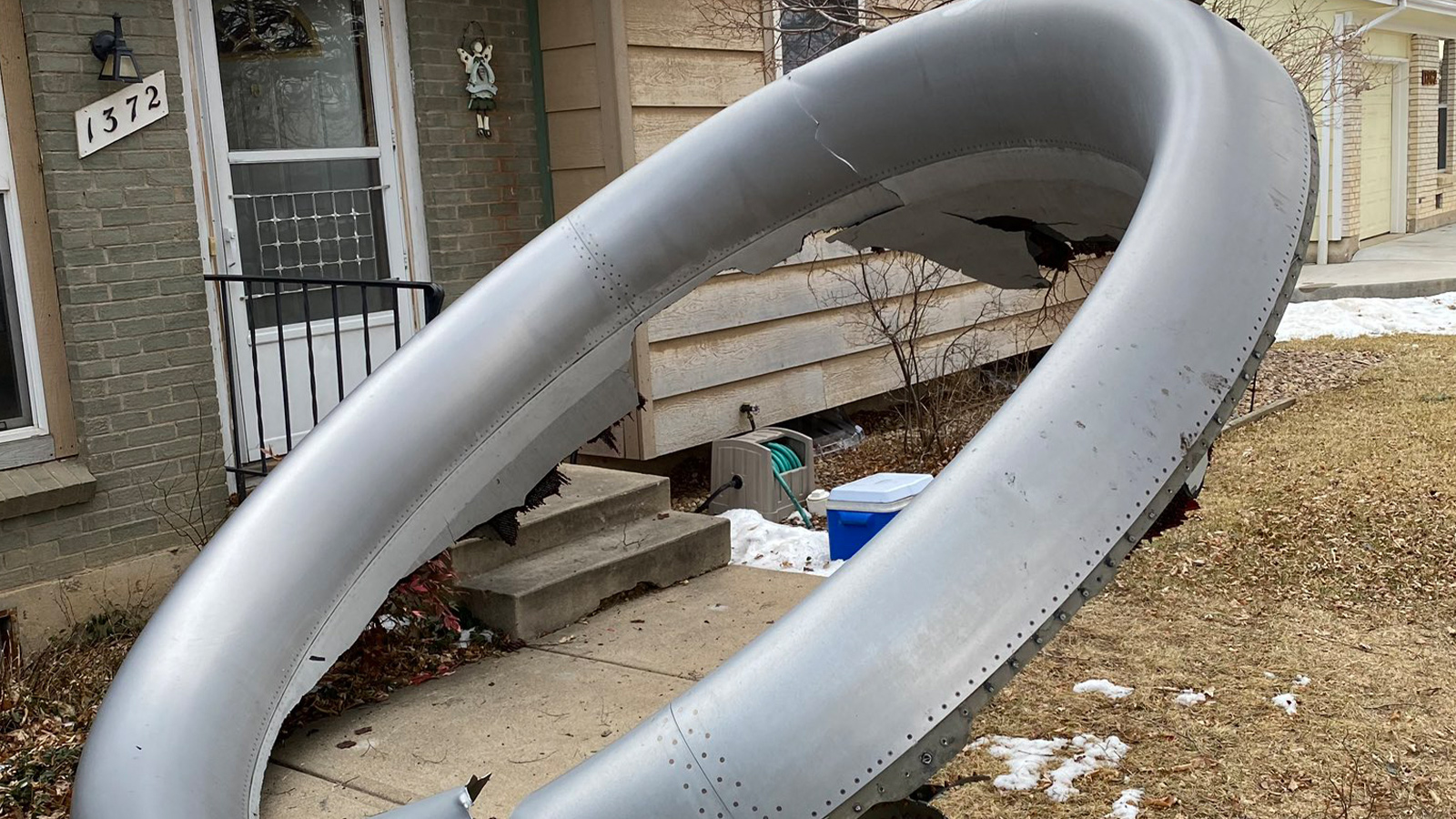Stay Up to Date
Submit your email address to receive the latest industry and Aerospace America news.
Fractured fan blades and broken cowlings in two other cases offer clues
Independent aviation experts see a possible trend in the case of the United Airlines flight that rained down bits of engine over Colorado, miraculously injuring no one on the ground nor any of the 239 passengers and crew.
In two other incidents over the last three years, engines of the same design as the Pratt and Whitney 4077-112 engine implicated in Saturday’s emergency landing in Denver have failed.
In December, the pilots of Japan Airlines Boeing 777 were forced to return to Naha Airport in Okinawa shortly after takeoff due to damage to the fan blades and cowling of its left engine.
The Japanese transportation ministry, which continues to investigate that emergency landing, noted Monday that the engine was “of the same series” as the engine in the Denver incident and requested that the FAA “investigate the cause of [Saturday’s] case and prevent recurrence.”
In February 2018, a United Airlines Boeing 777 from San Francisco managed to land safely in Honolulu after passengers and crew heard a loud bang and the crew was forced to shut down the right engine. A fan blade and portion of the cowling fell off the engine, the U.S. National Transportation Safety Board said.
If indeed the incidents are linked, “it’s a big black eye on the industry to let the same failure occur after it’s been identified and assessed,” said Peter Lemme, a former Boeing engineer turned aviation consultant. He said he happened to be at the Honolulu airport in 2018 when United Flight 1175 landed, and the engine condition appeared “nearly identical” to the engine from Saturday’s flight.
Experts who reviewed smartphone video taken as the Boeing flight turned back to Denver said the engine damage looked similar to that reported in the previous incidents.
In the Honolulu incident, NTSB concluded that Pratt and Whitney had failed to identify metal fatigue in the titanium alloy blades, in which microscopic cracks develop over time and weaken the metal.
Regarding the Denver incident, NTSB said Monday that it had found two fractured fan blades in the damaged engine and was continuing to investigate.
FAA on Sunday issued an airworthiness directive requiring “immediate or stepped-up inspections” of that engine model, which is flown exclusively on Boeing 777s, prompting airlines in the U.S., Japan and South Korea to ground approximately 100 Boeing 777s.
“Fan blade fractures happen,” said Chris Combs, a professor of mechanical engineering at the University of Texas at San Antonio. “The hope is that through testing and evaluating and maintenance, you can catch these cracks before they become a problem.”
Clint Balog, a professor at Embry-Riddle Aeronautical University in Florida and a former test pilot, cautioned against reaching conclusions about how the fan blades in the Denver incident became fractured.
“The laundry list of what could cause this kind of damage is almost unlimited,” he said. “The primary takeaway here is that while components and procedures are man-made and sometimes fail, the larger system absorbed this the way it was supposed to, with no lives lost.”
About cat hofacker
Cat helps guide our coverage and keeps production of the print magazine on schedule. She became associate editor in 2021 after two years as our staff reporter. Cat joined us in 2019 after covering the 2018 congressional midterm elections as an intern for USA Today.
Related Posts
Stay Up to Date
Submit your email address to receive the latest industry and Aerospace America news.




